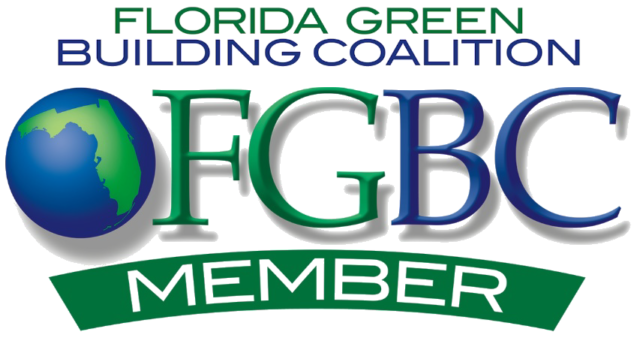
Disaster Recovery Programs

Baton Rouge Floods – Shelter At Home
Baton Rouge, LA and the surrounding areas experienced tremendous flooding in 2016. JWTC was selected to deliver critical clean-out and repair services on a large scale in multiple parishes allowing flood consumed residents to return to their dwellings and shelter at home. The Shelter at Home Program, funded by HUD and FEMA, provided grants for emergency assistance for disaster victims. Most projects in the area sustained flood-related damage ranging from low scope with minimal damage, to severe damage requiring temporary repairs. Most homes were without power, air conditioning, hot water, and needed other necessary safety repairs required to make returning home possible for homeowners. The floods damaged approximately 100,000 homes in Louisiana in August 2016. These projects were individually awarded and completed within 72 hours of award. JWTC completed almost 1,500 projects in less than 100 days.

New Jersey
REHABILITATION, RECONSTRUCTION, ELEVATION AND MITIGATION (RREM) PROGRAM
JWTC was selected as a top scoring builder for the RREM Program in the first pool of contractors released by the Department of Community Affairs (DCA). As an approved contractor for the program, JWTC assisted homeowners during the state’s rebuilding efforts in all 9 counties of New Jersey. The (DCA) has contracted with the RREM to assist in qualifying Homeowners as well as working with them throughout the construction process. The RREM Program works with homeowners to develop specifications for the work to be completed, obtain bids from a builder, assign a builder to each Homeowner, inspect the construction while it is in progress, and approve payments to the builder. We assisted in rebuilding communities in the Counties of Bergen, Essex, Hudson, Union, Middlesex, Monmouth, Ocean, Atlantic, and Cape May.

New York
NEW YORK BUILD IT BACK HOUSING RECOVERY PROGRAM
The Build it Back Single Family Program was designed to assist owners of properties with one to four units affected by Hurricane Sandy in Staten Island, Brooklyn, and Queens. Due to the extensive damage caused by Hurricane Sandy, multiple repair options accommodated the various levels of restoration including demolition, repair only, repair with elevation, or reconstruction. Program experience and understanding of local building processes allowed the team to implement strategic planning in heavily damaged areas. Our goal was to assist in expediting repair, elevation, or rebuilding a home as efficiently as possible with the least amount of impact on the homeowner’s displacement during the rebuilding process.
NEW YORK CITY RAPID REPAIRS PROGRAM – SHELTER IN PLACE
The City of New York elected to provide immediate relief to residents suffering in the aftermath of Hurricane Sandy. The Rapid Repairs Program, a Shelter in Place Project, was initially funded by the City of New York and later reimbursed by FEMA. Over 2000 projects were completed in less than 90 days, in all 5 Boroughs of New York. Scattered site experience, along with knowledge of the program expectations allowed JWTC to excel in the dismal conditions. Overall, the Program completed over 11,000 projects.
DASNY: NY RISING HOUSING RECOVERY PROGRAM
JWTC has been involved in helping rebuild communities in all five boroughs of New York City since December of 2012. JWTC is a qualified contractor for the NY Rising Housing Recovery Program. The program qualifies applicants to participate in repair, rehabilitation, or reconstruction and assessing the necessary work. In mid-October 2013, approved Homeowners received award letters notifying them of the grants they can expect to receive from the Program for allowable Construction Activities. Following receipt of acceptance, homeowners are permitted to select an eligible Contractor to perform the required scope(s) of work for the project. JWTC welcomes the opportunity to speak to you about your repair needs. Contact us.

Bastrop Fires
JWTC was the only contractor selected to complete the final reconstruction phase, which includes the required environmental Houston Toad Training. According to the Texas Governor’s website, “2011 was one of the worst wildfire seasons in recent memory. While extensive areas of Texas experienced damage from the 2011 wildfire season, the most significant losses and major damage to homes, businesses, public lands (parks) and other public facilities (hospitals & schools) stemmed from a series of devastating wildfire events within the counties that were Presidentially declared disasters in 2011 by Federal Emergency Management Agency (FEMA)”.

Hurricane Ike
JWTC helped rebuild many communities through the City of Houston, the City of Galveston, Galveston County, and Southeast Texas after Hurricane Ike. JWTC was proud to complete the first home in the South East Texas Regional Planning Commission (SETRPC) area for the Ike Disaster Recovery project. During this rebuilding project, our dutiful efforts established us as the top producing builder in the program. The CDBG-DR programs for Hurricane Ike began in 2011 and continue to rebuild communities along the Texas Gulf Coast.JWTC has assisted in rebuilding communities in Harris County, Galveston County, Jefferson County, Orange County, Hardin County, Bastrop County, Liberty County, Jasper County, Angelina County, Houston County, Nacogdoches County, Newton County, Polk County, Sabine County, San Augustine County, San Jacinto County, Shelby County, Trinity County, and Tyler County.

Hurricane Dolly
Hurricane Dolly was a tropical cyclone that made landfall in extreme southern Texas in July 2008. It made landfall on July 23 in South Padre Island, Texas, with 85 mph winds. The storm caused 212,000 customers to lose power in Texas, and dropped estimated amounts of over 16 inches of rain in some areas. Hurricane Dolly caused an estimated $1.05 billion in damage and is considered to be the most destructive hurricane to hit the Rio Grande Valley in 41 years and the worst hurricane to hit Brownsville since the 1980's. Sustained winds were estimated at 100 mph with gusts of 120 mph when Dolly made landfall. At the height of the disaster, some 155,000 homes were without electricity. The damage in South Texas was much more destructive than what was predicted, partially caused by tornadoes spawned by the storm. Coastal counties approved for HUD-CDBG rebuilding include: Cameron, Hidalgo and Willacy Counties. Continuing with our efficient pace, JWTC completed the first home for this project in 17 days.

Hurricane Harvey
Texas Partial Repair & Essential Power for Sheltering (PREPS) FEMA Program
Texas Direct Assistance for Limited Home Repair (DALHR) FEMA Program
City of Houston Direct Assistance for Limited Home Repair (DALHR) FEMA Program

Hurricanes Maria & Irma
Sheltering and Temporary Essential Power (STEP) Program

2015 & 2016 Flood Events
City of San Marcos CDBG-DR Housing Rehabilitation/ Reconstruction Services Program









